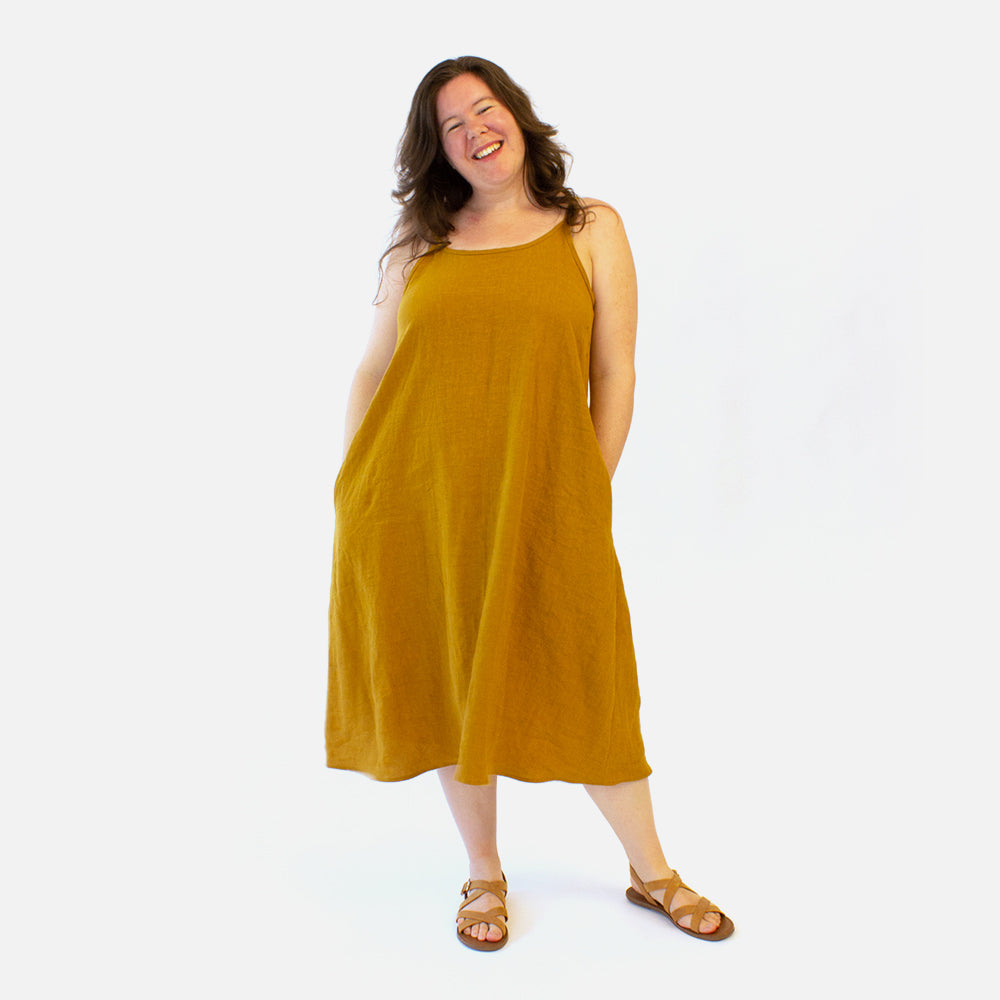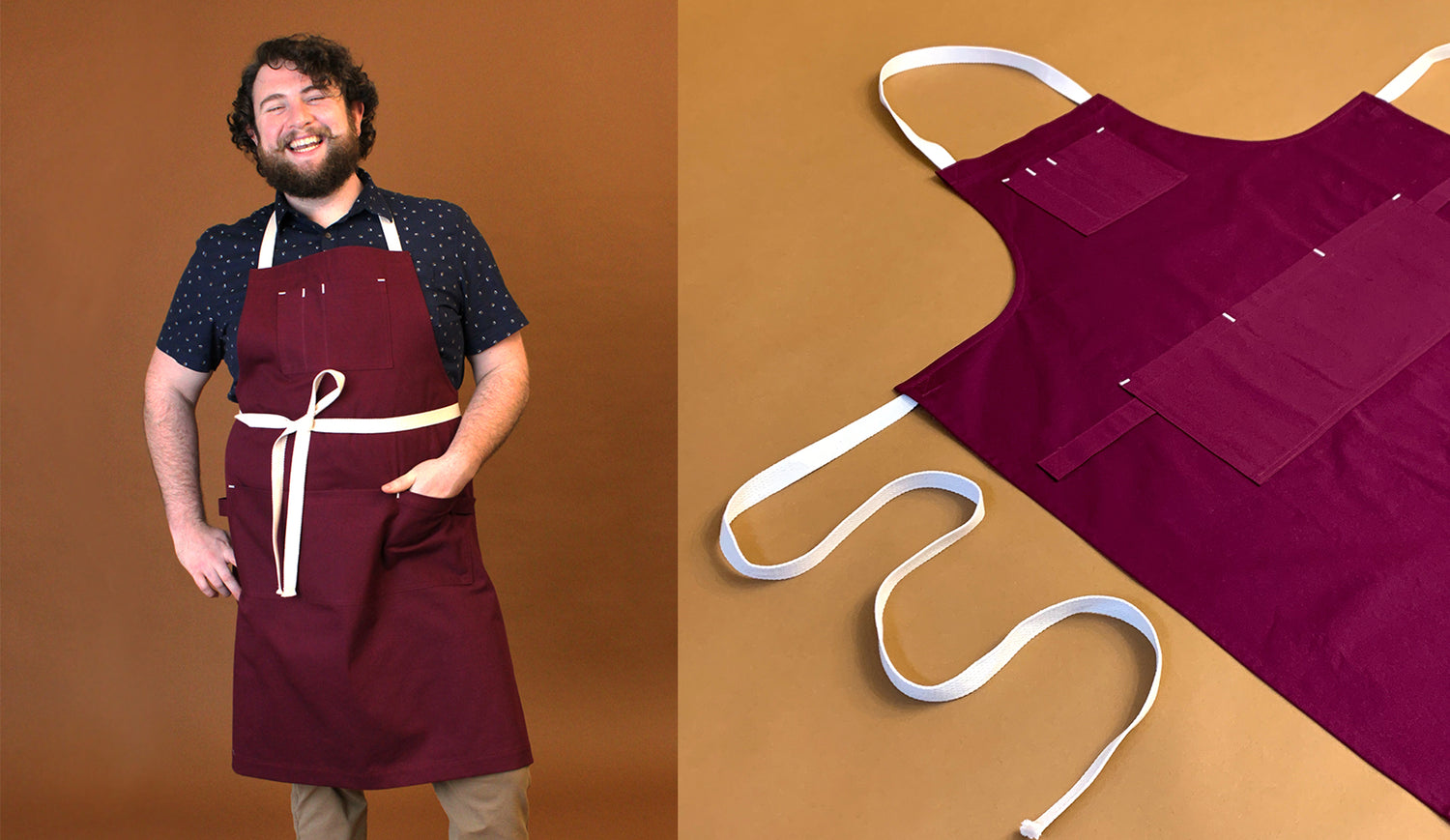 Doing fiddly work with knit fabrics can be challenging. Often knits will shift and wobble or struggle to hold a press - not to mention those wavy seams! The pockets are certainly the most challenging part of the Blackwood Cardigan, but they are a great opportunity to level up your knit sewing game. If you are nervous, try a pocket on some scrap fabric first. This will help to build confidence.
For today's tutorial, I am going to use tissue paper to stabilize the pocket. This is not necessary, but it helps to reduce those wavy seams.
This is the first sewing step in the Blackwood Cardigan Sewalong. If you are making view B, you can skip today!
Doing fiddly work with knit fabrics can be challenging. Often knits will shift and wobble or struggle to hold a press - not to mention those wavy seams! The pockets are certainly the most challenging part of the Blackwood Cardigan, but they are a great opportunity to level up your knit sewing game. If you are nervous, try a pocket on some scrap fabric first. This will help to build confidence.
For today's tutorial, I am going to use tissue paper to stabilize the pocket. This is not necessary, but it helps to reduce those wavy seams.
This is the first sewing step in the Blackwood Cardigan Sewalong. If you are making view B, you can skip today!
Let's get started! Fold each top pocket piece in half, matching notches. Press.
 Pin pocket tops to pocket bottoms, matching notches.
Pin pocket tops to pocket bottoms, matching notches.
 Sew pocket tops to pocket bottoms using a small zig-zag stitch. I have also finished mine with my serger, this is optional.
Sew pocket tops to pocket bottoms using a small zig-zag stitch. I have also finished mine with my serger, this is optional.
 Press the seam down toward the pocket bottom.
Press the seam down toward the pocket bottom.
 Topstitch the seam allowance down using a small zig-zag stitch.
Topstitch the seam allowance down using a small zig-zag stitch.
 I have highlighted my zig-zag stitch below in white so you can see it.
I have highlighted my zig-zag stitch below in white so you can see it.
 For the next step, you can create a pressing template to help you get smooth lines. Cut a piece of thin cardboard or card stock 5" x 6". I am using a soda box.
For the next step, you can create a pressing template to help you get smooth lines. Cut a piece of thin cardboard or card stock 5" x 6". I am using a soda box.
 Use the template as a guide for pressing. Press the fabric up and over the edges of the cardboard.
Use the template as a guide for pressing. Press the fabric up and over the edges of the cardboard.
 Depending on your fabric, you may have trouble getting the press lines to hold. Just try your best and we will force them under when we pin it down.
Depending on your fabric, you may have trouble getting the press lines to hold. Just try your best and we will force them under when we pin it down.
 Now comes the tissue paper part. Again, this is an optional method for eliminating wavy seams. Place the issue under your project. Place the pocket on the pocket markings on the pattern piece.
Now comes the tissue paper part. Again, this is an optional method for eliminating wavy seams. Place the issue under your project. Place the pocket on the pocket markings on the pattern piece.
 Pin all the way around the pocket. I use lots of pins to get things nice and secure. Pin through the fabric and tissue if using the tissue method. Make sure your pressed edges are folded under.
Pin all the way around the pocket. I use lots of pins to get things nice and secure. Pin through the fabric and tissue if using the tissue method. Make sure your pressed edges are folded under.
 From the back, your tissue should look like this:
From the back, your tissue should look like this:
 Sew around the sides and bottom of the pocket using a small zig-zag stitch. Back stitch at the corners or do an optional bar tack here. You can also do a more traditional woven fabric finish and sew a small triangle here.
Sew around the sides and bottom of the pocket using a small zig-zag stitch. Back stitch at the corners or do an optional bar tack here. You can also do a more traditional woven fabric finish and sew a small triangle here.
 You should have sewn through the tissue paper as well as the fabric, looking something like this:
You should have sewn through the tissue paper as well as the fabric, looking something like this:
 Carefully tear off the tissue paper, getting all the little tissue bits out. You can use a piece of tape to help with this.
Carefully tear off the tissue paper, getting all the little tissue bits out. You can use a piece of tape to help with this.
 Voila! A beautifully flat knit patch pocket!
Voila! A beautifully flat knit patch pocket!
 Repeat for the other side to get two patch pockets. Congratulations! you just leveled up your sewing game.
Repeat for the other side to get two patch pockets. Congratulations! you just leveled up your sewing game.

Next, we will be covering how to stabilize a shoulder seam! See you then!






